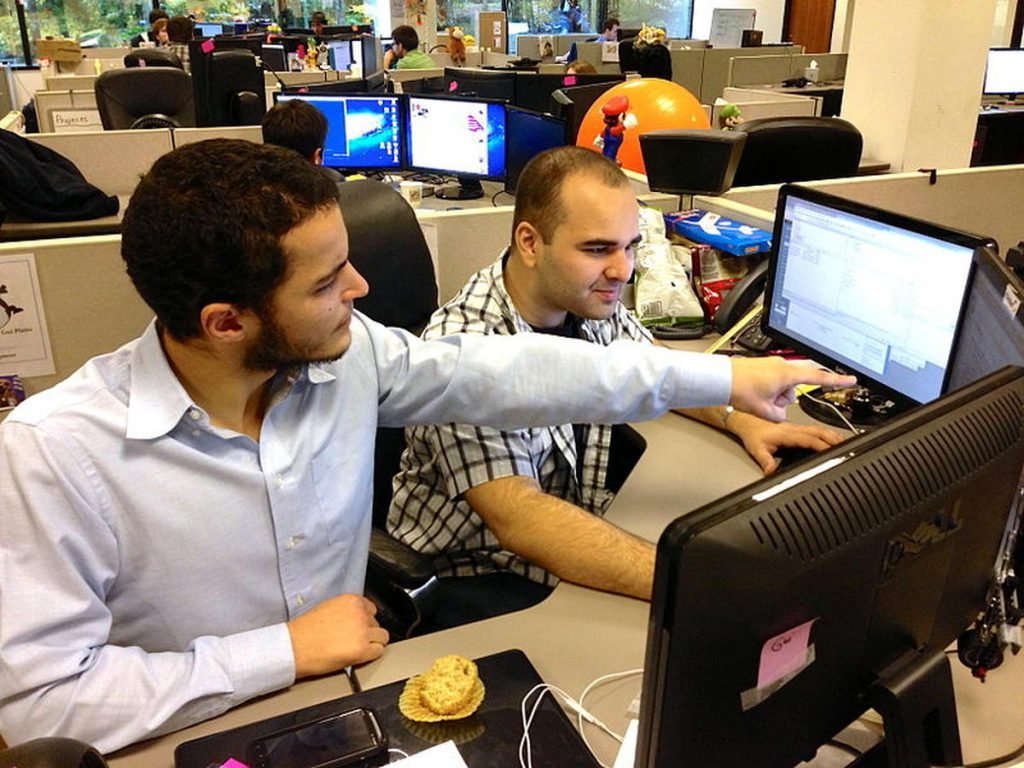The position of a backend developer has grown increasingly important in the current digital age when online platforms and applications rule our everyday lives. These tech-savvy wizards toil ceaselessly behind the scenes to ensure everything operates smoothly and effectively, frequently concealed from the end users' view. The backend is the system's heart and brain, and the frontend represents the user interface.

A backend developer is responsible for many activities that improve online applications' functionality, security, and efficiency. They are crucial in everything from managing databases and server-side scripting to enhancing performance and guaranteeing resilience.
This blog review six of a backend developer's primary duties and why they're crucial for producing outstanding online apps. This post will provide useful insights into the backend world, whether you are an aspiring backend developer, a frontend developer looking to improve communication with your backend coworkers, or simply someone interested in web development.
But first, let's clarify what we mean by backend development.
What is Backend Development?
The phrases frontend and backend in software engineering relate to the division of duties between the display layer (frontend) and the data access layer (backend) of a piece of software or the underlying hardware or physical infrastructure. Even if some presentation work is performed on the server, under the client-server approach, the client is typically thought of as the front end and the server as the back end.
Working on server-side software, or what you can't see on a website, is what backend development entails. Backend developers ensure the website functions properly by concentrating on databases, backend logic, application programming interfaces (APIs), architecture, and servers. They employ programming that facilitates database communication, data storage, comprehension, and deletion for browsers.
To create the framework of a website, backend developers work in tandem with frontend developers, product managers, primary architects, and website testers. Backend engineers must know various frameworks and technologies, including Python, Java, and Ruby. They guarantee that the back end responds promptly and effectively to user queries on the front end.
Server-side web applications are the domain of backend developers. They work on the server-side code that communicates with the database.
Some of the top backend developer responsibilities in 2023 include:
- Designing and developing APIs: The foundation of contemporary web applications is APIs. Backend engineers are in charge of planning and creating safe, effective, and simple-to-use APIs.
- Creating and keeping databases: Database management systems need a deep understanding from backend engineers. They create and manage dependable, scalable, and secure databases.
- Improving efficiency: Web applications need to be quick and responsive. Thus backend developers must make sure of this. They employ various performance optimization strategies, including caching, load balancing, and code optimization.
What are the primary responsibilities of a backend developer?
Responsibilities of a Backend Developer in Web Applications
So, what does a backend developer do exactly?
Here are six main backend development responsibilities:
-
Designing and Developing APIs
Designing and creating APIs (Application Programming Interfaces), which enable the frontend and other apps to connect with the backend, is one of the most crucial duties of a backend developer. APIs are protocols and standards that specify how data is sent between systems.
A backend developer must design consistent, dependable, secure, and user-friendly APIs. For other developers to understand how to utilize the APIs, they must also be documented.
-
Working with Databases
Working with databases is one of a backend developer's primary duties. Systems that store and arrange data systematically are known as databases. A backend developer must select the appropriate database type for their application, build the database schema (the data's organization and relationships), conduct CRUD operations on the data, and enhance the security and performance of the database. Learn data structures to build efficient and scalable software.
Depending on the requirements of their applications, backend developers may employ one or more types of databases. Additionally, they could use technologies like Object-Document Mapping (ODM) or Object-Relational Mapping (ORM) to simplify using databases in their programming language.
-
Implementing User Authentication and Authorization
Any online application that requires users to log in and access various resources must have user authentication and authorization. Verifying a person's identity when they attempt to access an application is known as user authentication. User authorization gives or restricts access to particular resources or actions depending on the user's position or rights.
Implementing user authentication and authorization in an application is the responsibility of a backend developer. They must provide a safe and simple method for registering, logging in, and out of users and maintaining user sessions and tokens. Additionally, they must specify and enforce the various users' responsibilities and rights on the backend.
-
Ensuring Web Security
Website security refers to any measure taken or program used to ensure website data is not exposed to cybercriminals or to stop the website from being exploited. These procedures aid in defending a website's sensitive information, hardware, and software against the numerous kinds of current assaults. Another important component of backend development is web security. The term "web security" refers to the policies and procedures that guard against harmful intrusions and risks, including SQL injection, cross-site scripting (XSS), cross-site request forgery (CSRF), denial-of-service (DoS), etc.
-
Improving Web Performance
An online application's user experience and satisfaction are also significantly influenced by web performance. Web application responsiveness and speed are referred to as web performance. Backend developers must optimize their application's code, data, and resources to increase online performance.
-
Writing Clean and Maintainable Code
Finally, a backend developer must provide well-written, maintainable code. Clean code is simple to read, comprehend, and alter. Well-documented, structured, and organized code is maintainable. To develop high-quality web apps that are scalable, trustworthy, and bug-free, clean and maintainable code must be written.
The Final Words
Of course, a backend developer's duties are not limited to these. Depending on the demands and preferences of the project, a backend developer may also need to acquire and execute various additional skills and duties. These six duties, however, are some of the most frequent and crucial ones that a backend developer should be able to perform.
The Full Stack Developer course from Imarticus Learning will provide you with the knowledge necessary to build full apps utilizing data structures and algorithms. This curriculum will provide you with the technical know-how in front-end and backend programming over six months, laying the groundwork for a rewarding future as a full-stack web developer.










